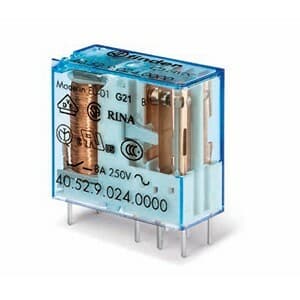| SSM1A455F7 Schneider Electric SSM1A455F7 is a solid state relay (SSR) within the SSM sub-ra... | Schneider Electric | | |
| SSM1A455BD Schneider Electric SSM1A455BD is a solid state relay (SSR) within the SSM sub-ra... | Schneider Electric | | |
| SSM1A312P7R Schneider Electric SSM1A312P7R is a solid state relay (SSR) within the SSM sub-r... | Schneider Electric | | |
| SSM1A16P7R Schneider Electric SSM1A16P7R is a solid state relay (SSR) within the SSM sub-ra... | Schneider Electric | | |
| RXG11E7 Schneider Electric RXG11E7 is a relay within the RXG sub-range designed for inte... | Schneider Electric | | |
| RUMF23BD Schneider Electric RUMF23BD is a universal plug-in relay featuring flat pins and... | Schneider Electric | | |
| SSM1A112P7R Schneider Electric SSM1A112P7R is a solid state relay (SSR) within the SSM sub-r... | Schneider Electric | | |
| SSM1A112F7R Schneider Electric SSM1A112F7R is a solid state relay (SSR) within the SSM sub-r... | Schneider Electric | | |
| SSLZVA2 Schneider Electric SSLZVA2 is a plug-in socket designed for use within the SSL s... | Schneider Electric | | |
| RXG25RD Schneider Electric RXG25RD is a relay designed for interfacing applications, par... | Schneider Electric | | |






